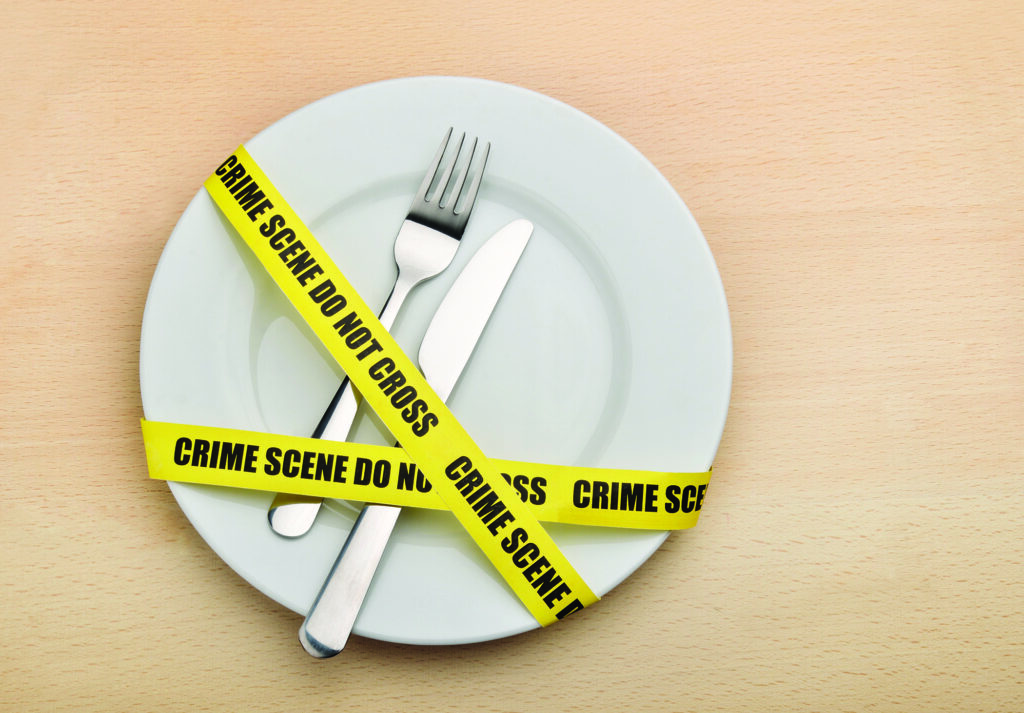Find out how much you REALLY know about food safety.
One in six people in the United States are still getting food poisoning, leading to 100,000 hospital stays and 3,000 deaths in the U.S. each year. So, how can we be safer with our food at home? Try our quiz and determine how food safe-savvy your household is or will be soon.
1) True or False: It’s okay to keep fruits and vegetables together with raw meat, eggs, poultry and/or seafood.
2) When preparing groceries to eat, what needs to be done before eating? (Circle All that Apply)
- Wash hands
- Wash kitchen utensils, countertops, and cutting boards
- Wash fruits and vegetables
- Wash raw meat, seafood, eggs, and poultry
- Bacteria can move from the outside to inside of the fruit/vegetable.
- Not washing could reduce the nutrients in the produce.
- There is no reason to wash it.
- Washed produce makes food taste better.
- When it is hot enough to the touch.
- When it looks like it looks on the cookbook picture.
- When the food thermometer reaches 140 F.
- When it tastes good.
- Immediately after cooking
- Within two hours of cooking time
- After two hours from cooking time
- There is no recommended time
- Wash fruits/vegetables, utensils, and the inside of lunch bag.
- Provide proper insulation for hot and cold foods.
- Throw away used plastic bags and any perishable leftovers.
- All of the Above
3) Why should you wash produce even if it is going to be peeled?
4) How do you know if food has been cooked properly?
5) True or False: Food can sit out for a while on the countertops after it has been cooked without risk of bacteria.
6) How soon after cooking food should it be stored in the refrigerator?
7) What should you do to improve the safety of your children’s lunches?
ANSWERS
Answer 1: False. It’s important to not cross-contaminate foods as that can encourage the transportation of bacteria from the raw meat to the produce. Even in the grocery cart, keep different foods separated from one another and have raw meat in a separate plastic bag from other grocery items.
Answer 2: All but D. Hands should be washed with soap and water for at least 20 seconds. Kitchen utensils, cutting boards, and countertops should be cleaned with a teaspoon of bleach in a quart of water after each use. Produce should be washed, but don’t wash raw food, as the juices could contaminate other food as well as other cooking areas.
Answer 3: A. Bacteria can move. According to the U.S. Department of Health & Human Services, research has shown that bacteria can move from the outside to the inside of produce. Washing with running water is the best way to clean produce, without soap or any cleaning product as the product could go into whatever you are cooking as well.
Answer 4: C. When the food thermometer reaches 140 degrees F. Food poisoning can occur between temperatures of 40 degrees F and 140 degrees F. With the food thermometer, you will know for sure that the food has reached 140 degrees F. Clean the thermometer with hot water and soap after every use.
Answer 5: False. Food can still contract bacteria, even after being cooked. It is recommended on the foodsafety.gov website that you should keep cooked food on a warming tray or in a slow cooker at 140 degrees F to avoid bacteria. When re-heating food in a microwave, heat the meal to 165 degrees F and stir at the midpoint of the heating time and use the food thermometer to check the temperature.
Answer 6: B. Within two hours. Food should be placed in the refrigerator (set between 40 degrees F and 32 degrees F; freezer at 0 degrees F or below) before the two-hour mark and before the one-hour mark during the summer. It is also encouraged not to thaw or marinate food on your countertops but instead in a tray inside the refrigerator with cold water.
Answer 7: D. It is important to wash everything that goes into your child’s lunchbox, including your own hands. Use an insulated bag for lunches, with frozen gel packs for cold foods. Once your child comes home, throw away any food that remains in their bag.
CREDITS
story by BLAIR TOWNLEY
